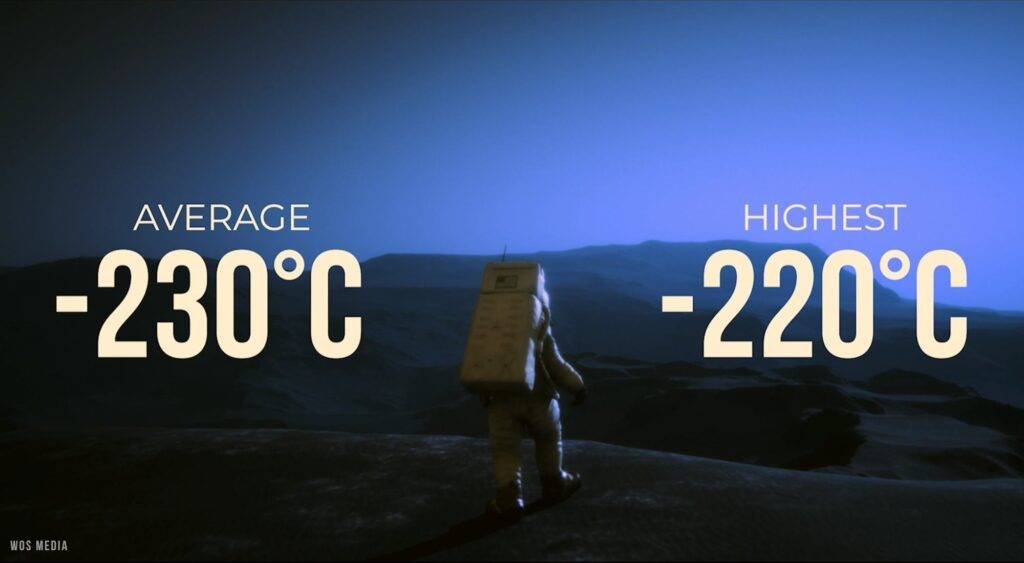Pluto 101: Why Its Planetary Status Was Revoked Controversially?
- Team WOS
- 10 Mins Read
WOS is supported by its audience. When you purchase through links on our site, we may earn an affiliate commission “from advertisers”, while you don’t need to pay in addition.
Is Pluto a planet or not? The debate continues as astronomers grapple with the definition of a planet and the history of Pluto’s classification. Watch this video to witness an incredible story of the “King Of the Kuiper Belt”.
Weird Member Of The Solar Family
In 1930, American astronomer, Clyde Tombaugh discovered Pluto, a complex and mysterious world with mountains, valleys, craters, and glaciers, way far out beyond the orbit of Neptune. From the beginning, Pluto was weird. It was really small and had a really elongated, elliptical orbit. Sometimes it was closer to the sun than Neptune, and sometimes it wasn’t. It had a moon, Charon, that was almost as big as it. Its orbit was on a really weird angle, not lining up with the other planets. Every family has that one weird member, and so Pluto was simply thought of as the oddest one in our Solar System.
In 2006, the International Astronomical Union (IAU), an organization of professional astronomers, passed two resolutions that collectively revoked Pluto’s planetary status. This decision was controversial. Now it’s been over a decade since Pluto was downgraded to a dwarf planet, but that doesn’t make it any less fascinating. So, let’s visit this distant world and see what a day on Pluto would be like.
Pluto's Planetary Status
When Pluto was stripped of its planetary status, it caused a stir in both the scientific community and the general public. Despite it being the farthest from the Earth, people have connected with this tiny world more than any other celestial body. And in 2015, when the New Horizons spacecraft did a flyby of Pluto, we finally saw its heart-shaped region, which felt like Pluto was sending love to us.

The status of Pluto as a planet has been a subject of controversy since its discovery in 1930. Even today, the debate continues among scientists and the general public.
Pluto is only 2300km wide, making it smaller than the Earth’s moon. In fact, at that size, Pluto is only about half the width of the United States. Pluto is roughly 39 AU away, among more than 2000 bodies in the Kuiper Belt. The Kuiper belt is a stellar disk containing ice, rock, and other cosmic bodies situated nearly 30 to 50 AU away from the sun. By the way, one astronomical unit is the distance from the Sun to Earth. From this distance, it takes sunlight 5.5 hours to travel from the Sun to Pluto. Today, Pluto is known as the “King of the Kuiper Belt” as it is the largest object in that region.
In the late 19th century, astronomers discovered Neptune by studying the unusual orbit of Uranus. Further observations of Neptune led astronomers to speculate that Uranus’s orbit was being disturbed by “another” planet besides Neptune, and it was initially named Planet X. Later in 1930, Pluto was discovered and was assigned the 9th position in the solar family. But during the 1990s many other objects were discovered around the same region and a debate started on if Pluto can be considered a planet after all. Eventually, in 2006, the IAU decided to drop Pluto as a planet and reassigned it as a dwarf planet.
What Makes A Planet?
See, to be a planet, you have to satisfy three criteria:
1. You must orbit the sun
2. You must be large enough so that your own gravity makes you round
3. You must clear your orbit of any other junk. There should be nothing of comparable size, except its natural satellites. In other words, you must “dominate” the region of your orbit
Pluto definitely fits criteria 1 and 2, but definition 3 was added to specifically remove Pluto from the planet list. Since there are so many objects in the vicinity of Pluto’s orbit, it got disqualified.
Let's Get Physical
Pluto contains a silicate core in the center and a large body of liquid water ocean in the mantle layer surrounded by an icy crust. The surface of Pluto is covered with a basin of frozen nitrogen and carbon monoxide. These basins took different shapes such as the famous heart-like region known as “Tombaugh Regio” and a whale-shaped region known as “Cthulhu Macula ”.

Pluto’s surface is far from smooth – it’s full of craters, mountains, and even some plains. Pluto’s surface is a testament to the extremes of our solar system.
The sky is particularly blue and the scenery is maintained with icy mountains. Pluto also has occasional snowfalls. Experiencing this on Pluto will be truly breathtaking.
A day on Pluto is 6.4 Earth days long, so we’ll have enough time to explore it. But it is so far away from our home, nearly 5.28 billion kilometers away, that it will take about 5 hours for just one-way communication. Pluto takes 248 years to complete one revolution around Sun. If you lived on Pluto, you’d have to live 248 Earth years to celebrate your first birthday in Pluto-years. The gravity on Pluto’s surface is just 0.06 times that on Earth. So if you weigh 100kg back on Earth, you would weigh only 6kg here on Pluto!
Pluto's Nitrogen Mystery
There is one more problem with Pluto. The atmospheric pressure is very small, only 1 Pascal. Such a thin atmosphere can not protect us from radiation. That being said, there is something mysterious happening on the surface of Pluto! Pluto is so small that it barely has the gravity necessary to hold onto its atmosphere. As a result, Pluto is constantly losing hundreds of tons of its primarily-nitrogen atmosphere as it loops around the Sun.

Despite constantly losing tons of nitrogen from its atmosphere, Pluto still manages to hold onto 98% of it, and scientists are baffled.
With this in mind, you might wonder why Pluto hasn’t run out of nitrogen yet. Scientists wonder the same thing. Pluto’s atmosphere has 10,000 times lower pressure than Earth’s at the surface, and hundreds of tons of nitrogen are escaping every hour. Nevertheless, the atmosphere remains 98% nitrogen.
Researchers are investigating potential sources of nitrogen: whether it’s riding in on comets, or flying from impact craters. Their best guess is that some sort of hidden geological process must be creating all the spare nitrogen, but the exact nature of that process remains a mystery.
Is There Life On Pluto?
The temperature on Pluto is very cold as it is farthest from the sun. The average temperature on Pluto is -230 degrees Celsius while the highest temperature reaches -220 degrees Celsius. Sun appears only as a tiny dot in Pluto’s sky, thus it will forever be cold and snowy. But, gladly, it is not lonely. Pluto has 5 moons, Charon being the closest and the largest. Apart from Charon, the other 4 moons – Styx, Nix, Kerberos, and Hydra are visible too. The sky on Pluto will definitely be worth watching.

The possibility of life on Pluto has gained attention after NASA’s New Horizons spacecraft revealed evidence of a subsurface ocean and complex organic molecules.
The surface of Pluto is extremely cold, so it seems unlikely that any life could exist there. At such cold temperatures, water, which is vital for life as we know it, is essentially rock-like. However, Pluto’s interior is warmer, and some astronomers think there could be a liquid water ocean deep inside, potentially harboring life.
Overall, Pluto is a silent, cold, and deserted place where there is nothing volatile apart from a few volcanic events. It is extremely cold, with no protection from radiation, and has very low gravity. But it does have breathtaking views and beautiful scenery. Pluto is supposed to be formed from the residual of the protoplanetary disc of the sun, so Pluto can provide a good opportunity to study the origin of solar systems. Spending a day on Pluto will be an interesting adventure. Pluto is far far away but… waiting for us with lots of love.
Do you love Pluto? Let us know in the comments. Do follow us on Instagram for daily quality content that’ll make you fall in love with science.
Share this article
Team WOS
We make people fall in love with science.
Share this article
Neil deGrasse TysonThe discovery of Pluto was a significant moment in human history, and its exploration is just as important.
Latest posts
We have learned many partial truths and some remain with us even when we are studying higher courses. Let’s look up such partial truths that are very common...
How do the animals and birds view the world around them? Do they perceive everything just like a human? Let's understand the basic anatomy of the eyes of...
What will the conditions be for the human body in space? How much difference a human being would feel while being in space? Space is scary and lonely, and conditions are...
Here is a list of the best science books that'll take you deep into the ocean of science. Books fueled the mighty revolutions in human history and produced...
World's most renowned scientists think that the cosmos has quantum consciousness. First of all, what exactly is consciousness? Scientists are actively engaged experimental tests of these ideas. One approach is to study brain-impaired patients to see if their information...
Trending Articles
We have explored only a few percent of Earth but what if we could somehow reach the center of the Earth? Today let’s go on a Journey To The Earth's Core. The underworld has been in the imagination for many centuries — be it a place of hell or the afterlife, or a place from which future heroes will...
The animal kingdom has evolved from unicellular organisms to gigantic dinosaurs and intelligent social animals, like us, Human beings! Throughout this evolutionary history, different species have left some characteristics or gained something new depending upon
Here is a list of the best science books that'll take you deep into the ocean of science. Books fueled the mighty revolutions in human history and produced...
What will the conditions be for the human body in space? How much difference a human being would feel while being in space? Space is scary and lonely, and conditions are...
How did the universe begin? Let’s dive deep into the origin of the Universe and the weirdest theories about it. For example, let’s go to ancient Greece. From...
Big Bang nucleosynthesis created equal numbers of matter and antimatter. Antimatter is negative counterpart of matter, having the same mass but opposite...


































